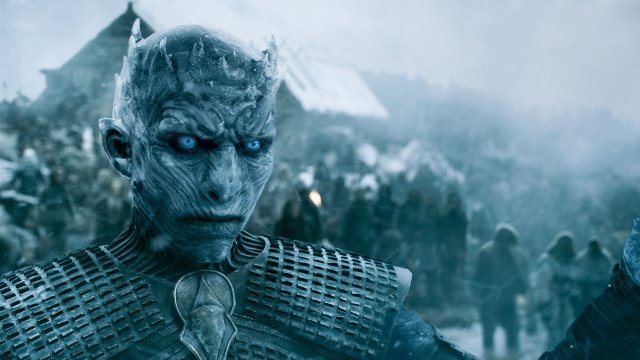“Game of Thrones” might not be the best TV drama ever, although it’s certainly in that conversation. In terms of representing the perfect modern pay-TV construct, though, the HBO series has that crown all to itself.
While it’s difficult to concoct apples-to-apples comparisons, the closest antecedent would be “The Sopranos,” which garnered huge ratings and cultural cachet during its run from 1999 to 2007.
Still, Tony and the gang didn’t have dragons on their side and fill the largest hall at Comic-Con, so it’s not exactly a fair fight.
In some respects, “Game of Thrones” is like any number of prestige dramas, boasting a sprawling cast and dense serialized storytelling. But the program couples those qualities with the scope of a theatrical blockbuster, a budget (according to various reports around $10 million an episode) that trounces most of what’s on TV, and deep roots in the science-fiction/fantasy realm that produces the most loyal and ardent fans — a contingent accustomed to paying a premium for products they want.
Simply put, if the goal of a pay service — HBO, Showtime, Netflix, Starz — is to keep people subscribing, George R.R. Martin’s creation delivers on every level. That includes not only ratings that eclipse everything else on pay TV but the sheer tonnage of attention that the program generates, turning media outlets into foot soldiers in HBO’s marketing campaign.
One would practically have to be living in a cave, in fact, to have missed the media drumbeat heralding the show’s return. It’s also the kind of show that people don’t really dare to let sit unwatched in their DVR queues, lest Twitter (which didn’t exist when “The Sopranos” signed off) ruin it for them.
Add to that back-to-back wins as best dramatic series at the Emmys, where its record-breaking haul of 12 awards overall in 2016 turned the annual awards showcase into a prolonged infomercial for HBO.
Nor does the program’s allure end when the TV’s off, or during the long lapses between seasons. Merchandising is also a major part of the mix, including HBO’s announced plans for a worldwide touring exhibition that will kick off this fall in Europe, complete with props, costumes and a “10,000-square-foot interactive experience.”
Other programs have been hugely important to their networks. “Mad Men” and “The Shield” put AMC and FX on the original-series map, and “The Walking Dead” proved basic cable could surpass the broadcast networks’ top shows in viewership. “Downton Abbey” did the same for PBS, while a series like “Girls” connected with an elusive demographic cohort in a way few others did.
The TV world has changed quite a lot since “The Sopranos” blacked out a decade ago. Still, factoring in all the dividends that “Thrones” brings to HBO, it’s hard to imagine anything matching those Lannister-like benefits, tangible and otherwise.
Sunday’s episode initiates what promises to become an increasingly frenzied countdown to the program’s finish, with two slightly truncated seasons yet to come. HBO, meanwhile, is developing possible spinoffs, and frankly to do otherwise given all of the above would be corporate malpractice. (The network, like CNN, is a unit of Time Warner.)
Still, programs don’t catch lightning in a bottle very often. And while fans will lament the show’s end, HBO officials will have their own cause to shed a few tears when their “Game” is finally over.
“Game of Thrones” returns July 16 at 9 p.m. on HBO.



